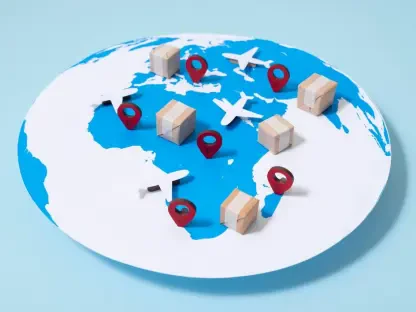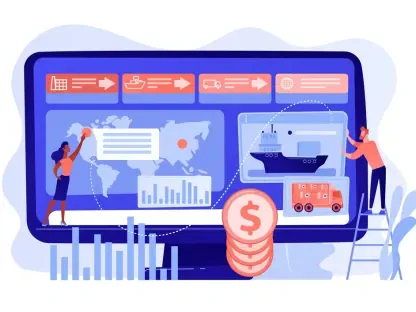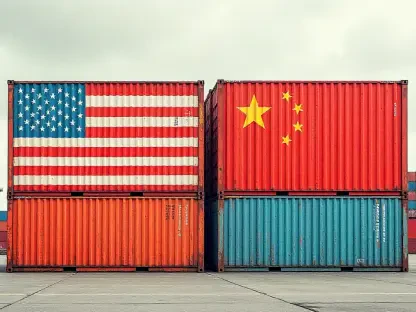Overview of the Parcel Delivery Industry
The parcel delivery industry stands at a critical juncture in 2025, driven by the unrelenting surge of e-commerce and the demand for efficient, cost-effective shipping solutions. With global online retail sales continuing to climb, logistics companies face immense pressure to adapt to a landscape where speed, reliability, and affordability are paramount. Major players such as United Parcel Service (UPS), the U.S. Postal Service (USPS), FedEx, Amazon, and Walmart dominate the market, each vying for dominance in a highly competitive environment. This sector, encompassing both domestic and international delivery networks, has become a cornerstone of modern commerce, with business-to-consumer (B2C) shipments emerging as the fastest-growing segment.
Technological advancements have revolutionized how parcels move from warehouses to doorsteps, with innovations in tracking systems and delivery optimization reshaping operational frameworks. Real-time tracking and data analytics enable companies to enhance transparency and predict delivery windows with unprecedented accuracy. Meanwhile, automation in sorting facilities and drone delivery experiments signal a future where efficiency could reach new heights, particularly in densely populated urban areas.
Beyond technology, the scope of the industry spans vast geographic and economic dimensions. Domestic delivery remains the backbone for most providers, yet international shipping grows as cross-border e-commerce expands. The focus on B2C trends reveals a consumer base increasingly reliant on seamless delivery experiences, pushing companies to refine last-mile strategies while balancing cost and speed to meet evolving expectations.
Industry Trends and Market Insights
Key Trends Shaping Parcel Delivery
A notable shift in the parcel delivery sector is the growing preference for low-cost shipping options, spurred by both retailers and consumers seeking to minimize expenses. Retailers, bearing the brunt of shipping costs to prevent cart abandonment, often prioritize affordability over speed, a trend mirrored by consumers willing to accept slightly longer delivery times if shipping is free. This dynamic has reshaped service offerings, compelling providers to innovate in cost-effective solutions.
Emerging technologies such as automation and route optimization are also transforming delivery efficiency. Automated sorting centers reduce human error and speed up processing, while sophisticated algorithms streamline delivery routes, cutting fuel costs and transit times. These advancements are critical in urban settings where traffic congestion poses persistent challenges, allowing companies to maintain service levels under constrained conditions.
Consumer behavior continues to evolve, with a marked acceptance of delayed gratification in exchange for cost savings. This shift aligns with broader e-commerce expansion, driving demand for last-mile delivery partnerships that can handle high volumes at reduced rates. Such collaborations offer new opportunities for logistics firms to pool resources, addressing the dual challenge of scale and expense in a market hungry for value.
Market Performance and Growth Projections
Recent data paints a complex picture of market share dynamics, with traditional giants like UPS and FedEx losing ground to Amazon and smaller regional couriers. Industry reports highlight a significant decline in UPS Ground Saver volumes, with a year-over-year drop of 32.7% in the third quarter, reflecting challenges in pricing and volume retention. This erosion underscores the intense price competition fueled by e-commerce giants leveraging their own logistics networks.
Looking ahead, growth forecasts for e-commerce delivery remain robust, with cost-driven strategies and competitive pricing expected to dominate through 2027. Analysts anticipate a rebound in demand for affordable shipping options as retailers recalibrate supply chains to prioritize efficiency. For UPS, strategic collaborations are seen as a pathway to financial recovery, potentially offsetting recent losses by aligning with partners who complement operational strengths.
The forward-looking view suggests that while short-term volatility may persist, the sector’s long-term trajectory hinges on adaptability. Companies investing in scalable, low-cost models are likely to capture emerging opportunities, particularly in underserved rural markets and expanding international corridors, setting the stage for sustained growth over the next few years.
Challenges in the E-Commerce Delivery Market
UPS faces formidable hurdles in the e-commerce delivery arena, with declining domestic parcel volumes casting a shadow over profitability. Operational costs have spiraled, exemplified by an overrun of $85 million in the second quarter for the Ground Saver service alone, driven by inefficiencies in delivery density. These financial strains highlight the difficulty of maintaining low-cost services in a high-expense environment.
Competitive pressures compound these issues, as Amazon, Walmart, and nimble smaller couriers encroach on the B2C segment. These rivals often operate with lower overheads, enabling aggressive pricing that undercuts traditional carriers. For UPS, this translates to a shrinking market share, as retailers gravitate toward partners offering the cheapest shipping solutions without sacrificing reliability.
Internally, high labor costs pose a significant barrier, particularly with unionized Teamsters drivers commanding wages far above industry averages for similar roles. This rigidity limits flexibility in pricing low-cost delivery options, placing UPS at a disadvantage against non-unionized competitors. Strategic partnerships and cost restructuring emerge as viable solutions, alongside efforts to optimize network efficiency and renegotiate labor agreements to align with market realities.
Regulatory and Strategic Partnership Dynamics
The relationship between UPS and USPS has seen turbulent shifts, marked by past rate disputes under previous leadership and a renewed focus on collaboration with current Postmaster General David Steiner. This evolving dialogue has paved the way for a tentative agreement to resume last-mile delivery partnerships, capitalizing on each entity’s strengths—UPS in middle-mile logistics and USPS in last-mile residential reach. Such alignment is crucial for tackling cost challenges in e-commerce shipping.
Regulatory changes further complicate the landscape, with the termination of duty-free status for low-value imports impacting shipment volumes from Chinese marketplaces. This policy shift, effective since earlier adjustments, has forced logistics providers to adapt to reduced import flows, prompting a reevaluation of international strategies. Compliance with these evolving regulations remains a priority to avoid disruptions in cross-border operations.
Leadership transitions and negotiation tactics play a pivotal role in shaping industry collaborations. The current agreement reflects a strategic intent to create mutual benefits, with pricing models under review to ensure sustainability for both parties. As partnerships deepen, the focus on operational synergy and regulatory adherence will likely define the success of such alliances in addressing market demands.
Future Outlook for UPS and Industry Innovations
The trajectory for UPS’s low-cost delivery services appears promising with the USPS partnership slated for full implementation by 2026. This collaboration is expected to stabilize Ground Saver and Mail Innovations, offering a reprieve from mounting delivery expenses while enhancing service reach. Financial benefits, projected for the latter half of 2026, could bolster UPS’s position in the competitive B2C market.
Potential disruptors loom large, with Amazon’s expanding logistics network and innovations like drone delivery threatening to redefine industry standards. These advancements challenge traditional carriers to accelerate their own technological adoption, from autonomous vehicles to AI-driven logistics planning, to remain relevant in a rapidly changing field. Consumer preferences for affordable shipping will continue to influence market strategies, pushing firms to prioritize value over speed.
Growth areas such as optimized last-mile solutions hold significant potential, with innovation and regulation shaping the path forward. Global economic conditions, including trade policies and fuel costs, will also impact operational planning. For UPS, leveraging partnerships and embracing cutting-edge tools will be essential to navigate these variables and secure a foothold in emerging delivery paradigms.
Conclusion and Strategic Recommendations
Reflecting on the insights gathered, the UPS-USPS partnership marks a critical step in addressing immediate cost pressures while navigating a fiercely competitive e-commerce delivery landscape. The collaboration provides a framework for operational efficiency, leveraging complementary strengths to tackle last-mile challenges that have previously strained profitability.
Moving beyond this milestone, actionable steps emerge as vital for sustained success. UPS needs to prioritize structural cost reforms, particularly in labor expenses, to align with market demands for affordability. Enhancing service quality through targeted investments in technology and network optimization stands out as a key differentiator against rivals.
Looking ahead, fostering deeper industry collaborations and staying agile in response to regulatory shifts offers a roadmap for resilience. The parcel delivery sector shows immense potential for growth, and for UPS, embracing innovative strategies while addressing foundational challenges paves the way toward long-term competitiveness in an ever-evolving market.









